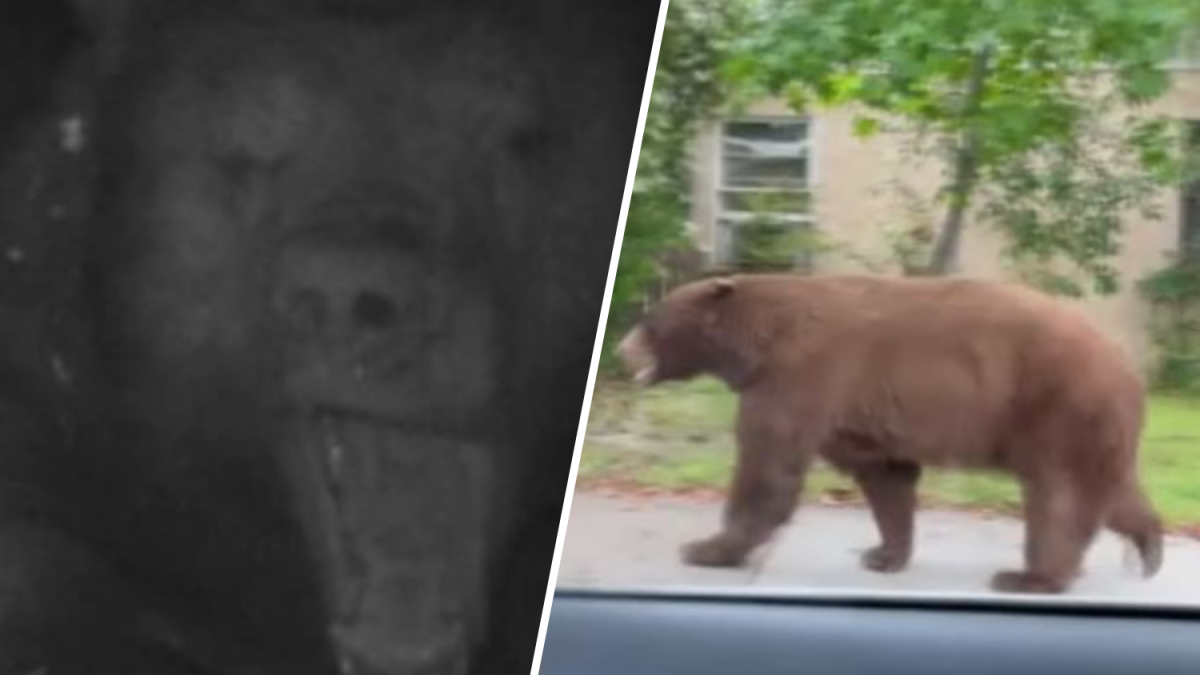A bear named “Junior” has been hiding out in the crawlspace under a home on the southern edge of Angeles National Forest.
A Peaceful Coexistence with Nature
In Sierra Madre, a couple has few complaints about their reclusive new tenant who moved into the crawlspace under their home a few weeks ago. Bob and Susan Nesler noted that the bear primarily keeps to itself, leaving late at night and returning early in the morning without disturbing anyone.
The Bear’s Presence
Bob Nesler humorously remarked, “He does leave piles of scat. That’s about my biggest complaint.” This isn’t surprising, considering they have a black bear, affectionately named “Junior,” residing beneath their home in the San Gabriel Valley foothills.
Community Awareness and Safety
Bear sightings are not uncommon in this area, located at the southern edge of the Angeles National Forest, which helps explain the Neslers’ calm demeanor regarding Junior. While they have been in touch with wildlife officials, the couple insists they only want the bear removed if it can be done humanely.
Wildlife Monitoring
The Neslers have installed a motion-activated camera, with assistance from California Fish and Wildlife agents, capturing images of what seems to be an older large black bear. One video showed Junior ambling down North Sunnyside Avenue on a cool September day.
Daily Routine of a Black Bear
“He comes in, apparently, around 5, 5:30 in the morning and leaves late at night,” Susan Nesler explained. “He hasn’t caused any problems for us, other than we need to get him to leave, for safety’s sake.”
Plans for Safe Removal
California Department of Fish and Wildlife agent Kevin Howells stated that they are monitoring the situation. “We would wait for the bear to leave the crawlspace. Then, I would work with the homeowner to maybe get that space boarded up with something more robust.”
Feeding Habits and Habitat Challenges
Black bears, which can vary in color, typically feed on plants, insects, nuts, berries, and even garbage when they forage for food. If their natural food sources become scarce, they are more likely to wander into neighborhoods in Southern California foothill areas.
Growing Black Bear Population
Over the past two decades, California’s black bear population has surged from an estimated 10,000 to 15,000 in the early 1980s to between 25,000 and 30,000 today—a conservative estimate from the state Department of Fish and Wildlife.
Physical Characteristics of Black Bears
Black bears, known for their small, narrow heads and ears, come in various coat colors, including tan, brown, and black. Adult females weigh around 200 pounds, while males can reach up to 350 pounds, with some individuals exceeding 600 pounds.
The Decline of Grizzly Bears
Interestingly, while the black bear is a common sight, the fearsome grizzly bear no longer roams the California wilderness. The last known grizzly was shot in the early 1920s, leaving the state’s flag as a reminder of a species that has vanished from its natural habitat.
